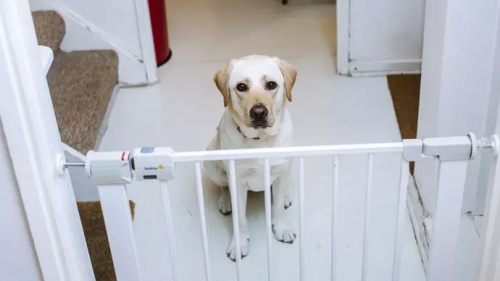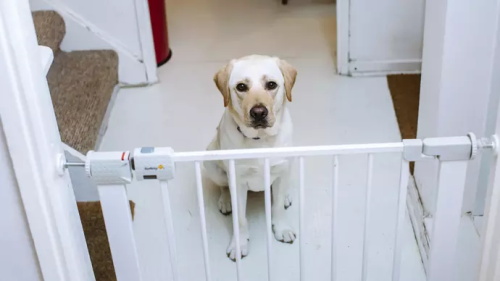Separation Anxiety in Pets Post-Pandemic: Understanding, Prevention, and Treatment

The COVID-19 pandemic dramatically reshaped daily life—not just for people, but for their pets as well. As humans adapted to working from home and spending more time indoors, pets enjoyed unprecedented companionship and attention. However, the transition back to offices, schools, and social lives has left many animals struggling to cope with long hours of solitude. The result is a widespread and growing problem: separation anxiety in pets.
This post-pandemic phenomenon has become one of the most significant behavioral challenges for pet owners in 2025. Understanding how and why it occurs—and what can be done to manage it—is essential for ensuring the emotional health and stability of our furry friends.
The Rise of Separation Anxiety During and After the Pandemic
During the pandemic, millions of people turned to pets for comfort and companionship. Over 23 million American households reportedly adopted dogs or cats during lockdowns. These “pandemic pets” grew up in households where human presence was constant. Their days were filled with affection, play, and attention—an ideal situation for bonding, but not for building independence.
When the world began reopening, pets faced a sudden and confusing shift. The people they loved were suddenly leaving for hours at a time, and the once-lively home environment became silent. For animals accustomed to constant interaction, this abrupt change triggered distress behaviors that experts now recognize as classic signs of separation anxiety.
Veterinarians across the country began noting spikes in anxiety-related cases. Some clinics reported a tenfold increase in prescriptions for pet anxiety medications such as fluoxetine (often called “dog Prozac”). But more importantly, trainers and behaviorists observed a pattern: animals weren’t misbehaving—they were panicking.
What Separation Anxiety Really Is?
Separation anxiety isn’t mere sadness when you leave. It’s an intense, panic-like reaction triggered by the fear of abandonment. The anxiety can manifest differently in dogs and cats, but both species can suffer deeply when separated from their owners.
Common signs in dogs include:
Persistent barking, whining, or howling when left alone
Destructive chewing, scratching doors or furniture
Attempts to escape (sometimes resulting in injury)
Urination or defecation indoors despite being house-trained
Following their owners obsessively when they’re home
Common signs in cats include:
Eliminating outside the litter box
Excessive grooming leading to bald spots
Refusing to eat when alone
Vocalizing loudly after owners leave
Hiding or acting withdrawn
These behaviors are not acts of spite. They are emotional responses to fear, confusion, and loss of stability. Left unaddressed, separation anxiety can worsen over time, leading to chronic stress and even health issues.
Why Pets Are Struggling More Now?
Several unique post-pandemic factors have amplified this issue:
Lack of Early Socialization
Many pets adopted during lockdowns never learned how to be alone or to interact confidently with strangers and new environments. For dogs especially, the “critical socialization window” occurs between three and fourteen weeks of age—precisely when pandemic restrictions were strongest.
Sudden Routine Changes
Pets thrive on consistency. The abrupt shift from 24/7 companionship to long periods of solitude has been jarring. A dog who once had daily walks and playtime may now wait eight hours for a short evening stroll.
Human Emotional Contagion
Pets are deeply attuned to their owners’ emotions. The stress, uncertainty, and anxiety experienced by humans during and after the pandemic can easily transfer to pets, making them more prone to anxious behavior.
Overbonding During Lockdown
For many, pets became emotional lifelines during isolation. While that bond is beautiful, excessive dependence—on both sides—has made separation more difficult.
Lifestyle Inconsistencies
Hybrid work schedules and erratic routines confuse pets. They never know when their owner will leave or return, creating ongoing uncertainty.
How to Help Pets Cope with Separation Anxiety?
Fortunately, with patience and proper training, separation anxiety can be managed—and often fully resolved. Below are strategies backed by animal behavior research and practical experience.

1. Gradual Desensitization
This is one of the most effective long-term approaches. The idea is simple: teach your pet that being alone isn’t scary.
Start by leaving your pet alone for very short periods—just a few minutes at first—then gradually increase the time. Reward calm behavior with treats or praise when you return. Over days or weeks, your pet learns that you always come back, and being alone is not a threat.
Consistency is key. Never make sudden leaps from a few minutes to several hours; progress should be slow and steady.
2. Establish a Predictable Routine
Pets find comfort in knowing what to expect. Set regular times for feeding, walking, and play. Try to leave and return home around the same times each day, even on weekends. A predictable schedule helps them feel secure and less anxious.
3. Create a Safe, Comfortable Space
Designate a quiet, cozy area for your pet to stay while you’re away. Include familiar scents like a used T-shirt or their favorite blanket. For dogs, a crate can serve as a den-like sanctuary if introduced properly. For cats, a soft bed in a sunny corner or elevated perch can provide comfort and safety.
Some owners find success using calming aids, such as pheromone diffusers, anxiety wraps, or soft background music designed for pets.
4. Encourage Independence
Avoid over-coddling your pet before or after leaving. Excessive attention can make departures and reunions emotionally charged. Instead, keep arrivals and departures calm and low-key.
Practice short “independence moments” while you’re at home—like working in another room or closing a door for a few minutes—so your pet learns that your absence is normal.
5. Use Mental and Physical Enrichment
Boredom and anxiety often go hand in hand. Keeping your pet mentally engaged can significantly reduce distress.
Try interactive toys, puzzle feeders, or treat-dispensing balls. Regular physical exercise—walks, play sessions, or agility activities—can help burn off nervous energy. Cats benefit from vertical climbing spaces, laser play, and scent-based enrichment like catnip or silvervine.
6. Avoid Punishment
Scolding or punishing your pet for anxiety-driven behavior (like accidents or destruction) will only worsen their fear. Pets aren’t acting out—they’re expressing panic. Instead, focus on reinforcing calm behaviors and gently redirecting unwanted actions.
When Professional Help Is Needed?
Sometimes, separation anxiety is too severe to handle alone. If your pet injures themselves, refuses to eat, or shows no improvement after consistent training, it’s time to consult a veterinarian or certified animal behaviorist.
Professionals can develop customized behavior modification plans and, if necessary, prescribe medications to reduce anxiety. The goal is not to sedate the pet but to lower their stress enough that training can be effective.
Medications like fluoxetine or clomipramine are commonly used for dogs with severe anxiety, while cats may benefit from options such as buspirone. Always use these under veterinary supervision.
The Owner’s Role: Awareness and Compassion
Pet owners often underestimate how deeply animals can feel emotional distress. Understanding that separation anxiety is a genuine psychological condition—not a behavioral flaw—is vital.
Here are a few owner-focused reminders:
Be patient. Progress takes time.
Avoid making departures overly emotional.
Reward calm, relaxed behavior.
Stay consistent in your schedule and responses.
If possible, consider a pet sitter, dog walker, or daycare on long workdays.
Remember that your pet’s anxiety is rooted in love and attachment. The very bond that causes them distress can also be their greatest source of healing when guided with empathy.
Innovations in Treating Separation Anxiety
As awareness grows, new tools and technologies are helping owners manage their pets’ stress more effectively:Smart collars and cameras: These devices allow owners to monitor their pets remotely, offering peace of mind and the ability to intervene if signs of anxiety appear.
Calming wearables: Gentle compression garments can help soothe nervous dogs.
Behavioral training apps: Guided digital programs provide structured routines for desensitization and reward-based learning.
Sound therapy: Playlists specifically designed for pets—featuring classical or ambient sounds—help reduce stress when played during alone time.
The Bigger Picture: Emotional Aftershocks of the Pandemic
The pandemic reshaped not just how we live, but how we relate to animals. It heightened our emotional connection to pets but also made them more dependent on us. Understanding this dynamic is crucial as we build new, balanced routines.
For many, hybrid work has created unpredictable schedules. Pets thrive when owners maintain some consistency—whether that means set office days or regular midday visits home. As society continues to evolve, pet welfare must remain part of that adaptation.
Separation anxiety in pets is more than a passing post-pandemic issue—it’s a long-term behavioral and emotional challenge that calls for awareness, compassion, and action.
By recognizing the signs early, creating stable routines, and using both behavioral and technological tools, pet owners can help their animals regain confidence and calm. For severe cases, professional guidance ensures pets receive the support they need to adjust healthily.
Our pets helped us weather one of the most stressful times in modern history. Now it’s our turn to help them through theirs—with patience, understanding, and love.



